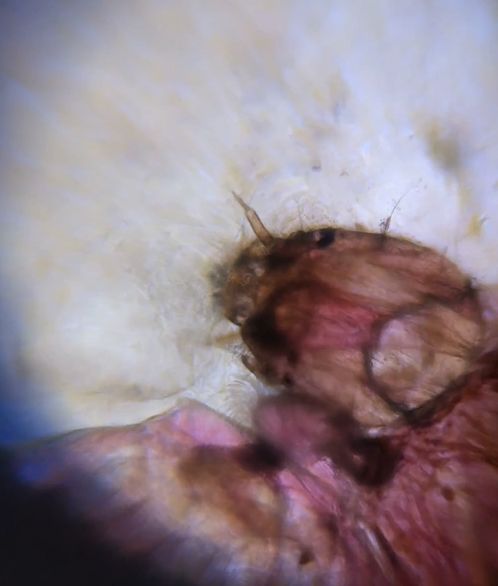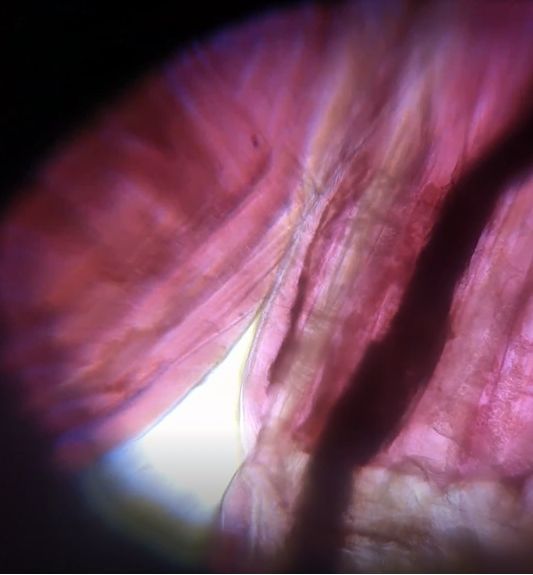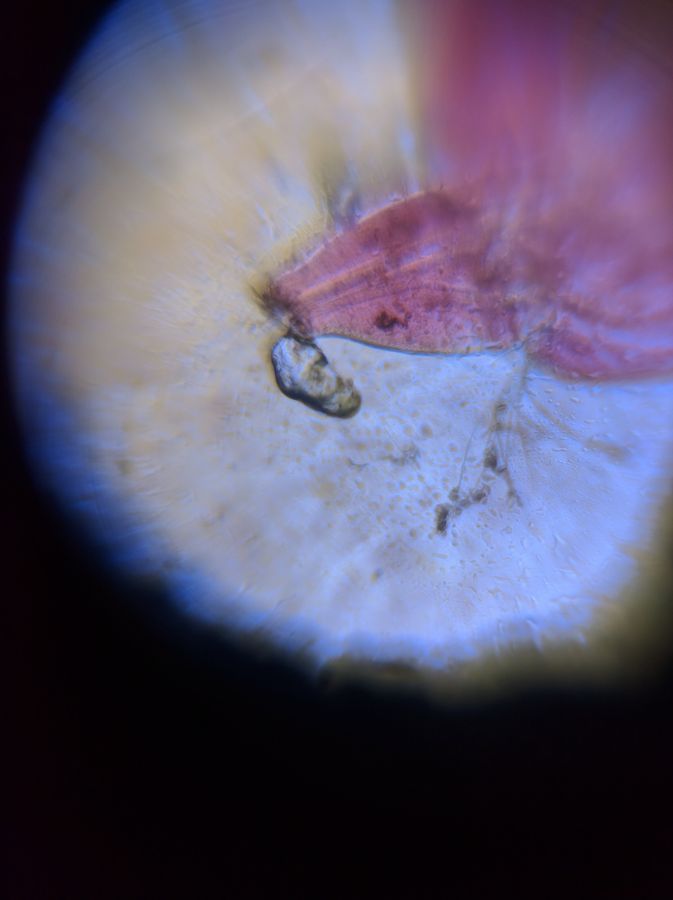Saving the Ganga Lake
 Mar 12, 2017 • 11:42 PM UTC
Mar 12, 2017 • 11:42 PM UTC Mongolia
Mongolia 140x Magnification
140x Magnification Unknown
Unknown
billy_naranbaatar
Learn about the author...
3posts
0comments
2locations

For the past 10 years, my grandfather, poet laureate G. Mend-Ooyo, has been rallying to protect and now save the Ganga lake, in his home province in Sukhbaatar, Mongolia. This lake is very near and dear to his heart, and to that of many other Mongolians. The lake is said to have been seeded by water from the Ganges River, and many legends tell of its healing properties. More important than the many legends, songs, and poems written about the lake is its ecological impact. The Sukhbaatar province in Mongolia is on the outskirts of the Gobi desert, yet, this lake exists as an oasis in the middle of it. It was originally fed by upwards of 20 underground springs, one of which is the famous “boiling” spring that intensifies based on the level of the sounds made around it (see below). It is also home to thousands of swans that gather together at the end of the spring to migrate south for the winter. However, due to a variety of reasons, including overuse by native herders, gradual degradation of its surrounding environment, and sandstorms the once grand lake is reduced to something that could easily be mistaken for a puddle. This year, the regression was alarming: no swans visited the lake and the total area of the lake had nearly halved. Close analysis revealed that the lake depth had gone from more than 2 meters in 2005 to only 30-50 cm at its deepest part. Despite years of attempts to stop the regression and resuscitate the lake, the efforts have not yielded any results. However, all is not lost. For the past 4 years, my grandfather has rallied an annual conference at the outskirts of the lake, and gathered many Mongolian scientists and scholars to come up with and implement solutions. Many of these efforts are underway now.

The Ganga Lake (in its previous glory) and the Golden Hill

The formerly annual swan migration. Hopefully, they’ll return home when the lake is revived.

Comparison of the lake in 2013 and 2016. The contrast is striking.
The Boiling Spring that feeds into the lake.

Swan migration two years ago

Extremely muddy and shallow water is all that is left. Still, the wildlife have no choice but to call it home

The state of the lake now

The Boiling Spring
My role in this movement for the past 4 years was mostly as an assistant until this last summer. This time, I had access to a foldscope! This allowed me to immediately check the water quality through qualitative observation under the microscope. I am currently writing a paper on my findings to be published in Mongolia with the findings of the other researchers. Here is my early draft of my findings (I am writing it simultaneously in Mongolian and English, this is the English version, of course).
INTRODUCTION
Lakes house a delicately balanced ecosystem. One of the most important parts of this ecosystem are the unseen: the microorganisms that make the lake their home. These microorganisms play essential roles in maintaining the health of the ecosystem. The first major role is the fixation of energy and carbon into the ecosystem through photosynthesis by algae and cyanobacteria. Other microorganisms or fish can then feed on these organisms, eventually leading to this energy to be distributed across the ecosystem. Even more important than this, however, is the decomposition of waste. Organisms, across their lifetimes, will consume, produce waste, and eventually die. The byproducts of these lives are the waste and the dead organisms themselves. These organic wastes must be broken down and reintroduced as nutrients for the environment, or else the waste will buildup and the amount of available nutrients will quickly diminish and eventually disappear. This type of cycle in which nutrients are used and reused is essential in maintaining a healthy ecosystem. This important function is almost exclusively reserved to microbes. They break down waste and other organic matter into simple nutrients that can be used by both themselves and other living organisms in the environment. Thus, due to the importance of microbes in lake ecology, the health of the microbiome of a lake can serve as a good indicator of lake health.
The Ganga Lake in Sukhbaatar, Mongolia, is a lake once known for its beauty and splendor. It is the subject of countless songs and poetry praising its beauty, and is one of the meeting points for an annual swan migration. However, due to a variety of factors, including overuse and sand migration, the lake health is in dire condition. Its condition has worsened so much that the swan migration was largely absent in 2016. Thus, to help assess the health of the lake and gain insight into the causes and possible solutions to the lake’s poor health, I looked at samples of the lake at 400X resolution, both on site and after two weeks, using a small isolated sample taken from the lake. 400X resolution was used in order to observe the lake microbes. The samples were prepared and viewed using a Foldscope microscope. When approaching the lake, it was teeming with bright red worms approximately 5 cm in length. The abundance of these worms, at least at the shallow shores of the lake front, is estimated to be 25 in every 1L of water. One of these worms was also sampled and viewed under the Foldscope to identify its origin and possible roles.
RESULTS AND DISCUSSION
https://microcosmos.foldscope.com/wp-content/uploads/2017/03/VID_20160905_165713.mp4
https://microcosmos.foldscope.com/wp-content/uploads/2017/03/VID_20160912_140927.mp4
Water Samples. Several photosynthetic microbes can be seen, though it is far from teeming with life.
My role in this movement for the past 4 years was mostly as an assistant until this last summer. This time, I had access to a foldscope! This allowed me to immediately check the water quality through qualitative observation under the microscope. I am currently writing a paper on my findings to be published in Mongolia with the findings of the other researchers. Here is my early draft of my findings (I am writing it simultaneously in Mongolian and English, this is the English version, of course).
INTRODUCTION
Lakes house a delicately balanced ecosystem. One of the most important parts of this ecosystem are the unseen: the microorganisms that make the lake their home. These microorganisms play essential roles in maintaining the health of the ecosystem. The first major role is the fixation of energy and carbon into the ecosystem through photosynthesis by algae and cyanobacteria. Other microorganisms or fish can then feed on these organisms, eventually leading to this energy to be distributed across the ecosystem. Even more important than this, however, is the decomposition of waste. Organisms, across their lifetimes, will consume, produce waste, and eventually die. The byproducts of these lives are the waste and the dead organisms themselves. These organic wastes must be broken down and reintroduced as nutrients for the environment, or else the waste will buildup and the amount of available nutrients will quickly diminish and eventually disappear. This type of cycle in which nutrients are used and reused is essential in maintaining a healthy ecosystem. This important function is almost exclusively reserved to microbes. They break down waste and other organic matter into simple nutrients that can be used by both themselves and other living organisms in the environment. Thus, due to the importance of microbes in lake ecology, the health of the microbiome of a lake can serve as a good indicator of lake health.
The Ganga Lake in Sukhbaatar, Mongolia, is a lake once known for its beauty and splendor. It is the subject of countless songs and poetry praising its beauty, and is one of the meeting points for an annual swan migration. However, due to a variety of factors, including overuse and sand migration, the lake health is in dire condition. Its condition has worsened so much that the swan migration was largely absent in 2016. Thus, to help assess the health of the lake and gain insight into the causes and possible solutions to the lake’s poor health, I looked at samples of the lake at 400X resolution, both on site and after two weeks, using a small isolated sample taken from the lake. 400X resolution was used in order to observe the lake microbes. The samples were prepared and viewed using a Foldscope microscope. When approaching the lake, it was teeming with bright red worms approximately 5 cm in length. The abundance of these worms, at least at the shallow shores of the lake front, is estimated to be 25 in every 1L of water. One of these worms was also sampled and viewed under the Foldscope to identify its origin and possible roles.
RESULTS AND DISCUSSION
https://microcosmos.foldscope.com/wp-content/uploads/2017/03/VID_20160905_165713.mp4
https://microcosmos.foldscope.com/wp-content/uploads/2017/03/VID_20160912_140927.mp4
Water Samples. Several photosynthetic microbes can be seen, though it is far from teeming with life.

The ant like head of the worm
https://microcosmos.foldscope.com/wp-content/uploads/2017/03/VID_20160829_094103.mp4
https://microcosmos.foldscope.com/wp-content/uploads/2017/03/VID_20160829_094420.mp4
Note the small hairs throughout the length of its body
https://microcosmos.foldscope.com/wp-content/uploads/2017/03/VID_20160829_094103.mp4
https://microcosmos.foldscope.com/wp-content/uploads/2017/03/VID_20160829_094420.mp4
Note the small hairs throughout the length of its body

Dark brown matter found in the digestive tract

Tail end with air pocket? forming around it
Due to the number of herd animals still watered by the lake each year, the amount of waste that goes into the lake is extremely high. Normally, a sudden increase in organic matter such as this would lead to eutrophication, in which there is an explosion of biological activity. However, the imaged samples prove to be scarce in live bacteria, and is instead home to large chunks of particulate matter, though to be undigested animal waste. This would indicate that the lake ecosystem is unhealthy and unable to cope with the amount of nutrients being introduced to it. Past a certain point, excess nutrients becomes poisonous to the environment and tends to lead to a decrease in the health of the ecosystem. This seems to be the case here, where the rapid decrease in the water levels of the lake, as well as a continual increase in the amount of waste that comes into the lake has led to the degradation of the health of the microbial community.
The worms are an interesting finding in that they don’t seem natural to the lake ecology. There are no known findings of an abundance of similar worms in healthy or unhealthy lakes in the literature. The worms had dark brown matter in their digestive tracts and had a well defined head structure, resembling that of ants. The bright red coloration of the worm also disappeared from the sampled worm after 3 days of the on site preparation. I suspect that the worms may be parasites that are native to the digestive tracts of the herd animals, deposited along with the wastes and thriving due to the waste polluted water that mimics the environment of animals’ digestive tracts. If this is the case, then this is a strong indicator that the lake is oversaturated with animal waste.
CONCLUSIONS
The findings published here are a strong indicator that the lake is oversaturated with animal waste. Further chemical studies of the nutrient content in the water may confirm this. A more detailed look at the worms may give us a better understanding of where they originated and why they have become so abundant in the lake, as well as what may be its natural habitat. Lastly, the use of the Foldscope has proved remarkably useful in gathering these findings. The ability to image on site allows a researcher to minimize the influence that they input from perturbing the environment, allowing us to image better samples more true to the natural state. The worm, for example, quickly lost its bright red coloration in just a few hours after collection and thus, if I had to wait to get to a stationary microscope to analyze it, I wouldn’t have gotten the same understanding of the organism that I do thanks to the foldscope. The foldscope shows potential to continue to be used to study and maintain the health of the lake, especially as efforts to revive the lake are underway.
I would welcome any feedback or suggestions! Specifically, if there is anyone that can help me figure out what species the worm may be and if it truly is a parasite from the digestive tracts of herd animals as I suspect. My apologies for the quality of the videos presented. The 400x lens is, as Dr. Prakash mentioned, a lot harder to work with than the 140x (with the trade -off being that it is much more powerful, of course).
If anyone is interested in the movement to save the Ganga Lake, the page for the “Save the Ganga Lake movement” is and the page for the “Ganga Lake Conference” is . Unfortunately, they are in Mongolian, so feel free to ask me about it as well! Any suggestions, stories of successful lake resuscitations, and other help would be greatly appreciated!
Due to the number of herd animals still watered by the lake each year, the amount of waste that goes into the lake is extremely high. Normally, a sudden increase in organic matter such as this would lead to eutrophication, in which there is an explosion of biological activity. However, the imaged samples prove to be scarce in live bacteria, and is instead home to large chunks of particulate matter, though to be undigested animal waste. This would indicate that the lake ecosystem is unhealthy and unable to cope with the amount of nutrients being introduced to it. Past a certain point, excess nutrients becomes poisonous to the environment and tends to lead to a decrease in the health of the ecosystem. This seems to be the case here, where the rapid decrease in the water levels of the lake, as well as a continual increase in the amount of waste that comes into the lake has led to the degradation of the health of the microbial community.
The worms are an interesting finding in that they don’t seem natural to the lake ecology. There are no known findings of an abundance of similar worms in healthy or unhealthy lakes in the literature. The worms had dark brown matter in their digestive tracts and had a well defined head structure, resembling that of ants. The bright red coloration of the worm also disappeared from the sampled worm after 3 days of the on site preparation. I suspect that the worms may be parasites that are native to the digestive tracts of the herd animals, deposited along with the wastes and thriving due to the waste polluted water that mimics the environment of animals’ digestive tracts. If this is the case, then this is a strong indicator that the lake is oversaturated with animal waste.
CONCLUSIONS
The findings published here are a strong indicator that the lake is oversaturated with animal waste. Further chemical studies of the nutrient content in the water may confirm this. A more detailed look at the worms may give us a better understanding of where they originated and why they have become so abundant in the lake, as well as what may be its natural habitat. Lastly, the use of the Foldscope has proved remarkably useful in gathering these findings. The ability to image on site allows a researcher to minimize the influence that they input from perturbing the environment, allowing us to image better samples more true to the natural state. The worm, for example, quickly lost its bright red coloration in just a few hours after collection and thus, if I had to wait to get to a stationary microscope to analyze it, I wouldn’t have gotten the same understanding of the organism that I do thanks to the foldscope. The foldscope shows potential to continue to be used to study and maintain the health of the lake, especially as efforts to revive the lake are underway.
I would welcome any feedback or suggestions! Specifically, if there is anyone that can help me figure out what species the worm may be and if it truly is a parasite from the digestive tracts of herd animals as I suspect. My apologies for the quality of the videos presented. The 400x lens is, as Dr. Prakash mentioned, a lot harder to work with than the 140x (with the trade -off being that it is much more powerful, of course).
If anyone is interested in the movement to save the Ganga Lake, the page for the “Save the Ganga Lake movement” is and the page for the “Ganga Lake Conference” is . Unfortunately, they are in Mongolian, so feel free to ask me about it as well! Any suggestions, stories of successful lake resuscitations, and other help would be greatly appreciated!
Sign in to commentNobody has commented yet... Share your thoughts with the author and start the discussion!

 0 Applause
0 Applause 0 Comments
0 Comments